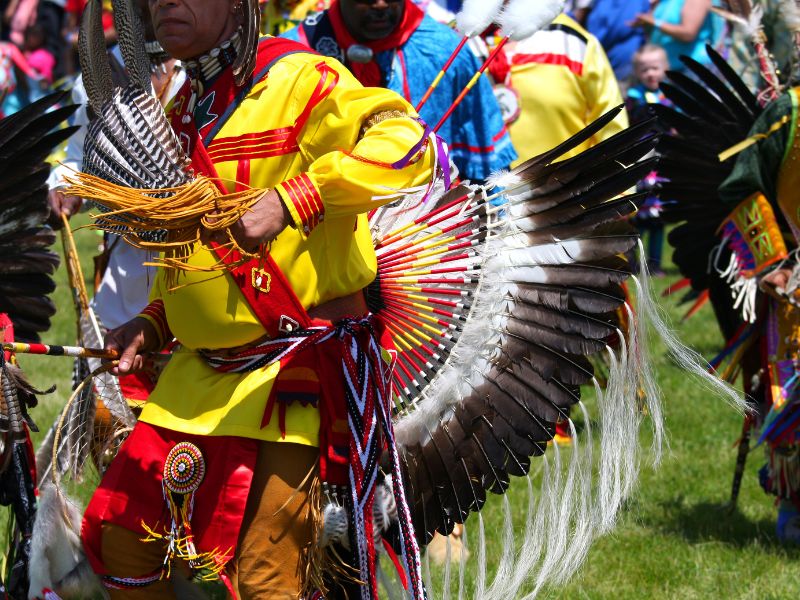This year, June 26-July 1, the always-impressive Smithsonian Folklife Festival program will be “Indigenous Voices of the Americas: Celebrating the National Museum of the American Indian.” The museum’s Washington, D.C. location is celebrating its 20th anniversary this year, and the program will honor contemporary and traditional creative expressions, celebrations and community connections that feed new possibilities for Indigenous futures.
“This is a special Folklife Festival this year,” said Rebecca Fenton, the program’s curator. “The program will show breadth and depth of the Indigenous experience from throughout the Western Hemisphere by focusing on the relationships the Smithsonian has with Native communities.”
In addition to celebrating the museum on the National Mall, the Folklife Festival program is also marking the 30th anniversary of the museum’s location in New York City and the 35th anniversary of the legislation that created the museum.
What To See and Do at the Festival
The Folklife Festival will feature more than 250 participants from 60 Indigenous communities in 10 countries. This year’s themes are “Relevance, Resistance, Representation and Reclamation.”
Festivalgoers of all ages can hear stories and songs, try traditional dances and learn about essential Indigenous traditional art forms such as weaving with Quechua weavers from Peru, pottery with Pueblo ceramic artists from New Mexico and basketry with an Anishinaabe artist from Michigan, among many others. Visitors can watch artworks grow as artists create murals and large-scale barriletes (kites) from Guatemala that will amaze your children.
On stage, 20 performing artists and groups will showcase the exciting range of traditional to contemporary Indigenous music and dance. Festival visitors can also engage with participants in discussions about social justice, cultural equity and youth leadership, a terrific opportunity for your tweens and teens to engage in the festival. They can also hear how Indigenous youth are reclaiming their languages through spoken-word and hip-hop.
For kids looking to learn more about Indigenous cultures of the Americas, storytelling will be presented throughout the day, along with hands-on creative activities to engage children and adults. Kids can try out traditional sports and games taught by Native athletes, including lacrosse and skateboarding. Storytellers will activate the museum’s outdoor amphitheater daily, sharing exciting cultural stories for all ages.
For those who love to cook (or eat!), the foodways stage will have demonstrations throughout the day such as Mesoamerican plant-based dishes and Oaxacan cooking from Mexico. Sean Sherman (Oglala Lakota Sioux), chef and author of The Sioux Chef’s Indigenous Kitchen, will give presentations inside the museum. Each evening, there will be a 30-minute beverage presentation (for the grownups!).
There will be food concessions outside on the National Mall for visitors to purchase a selection of Native foods featuring Latin American and Caribbean flavors. Inside the National Museum of the American Indian, the Mitsitam Native Foods Cafe will have Native-inspired offerings available for purchase. Mitsitam means “Let’s eat!” in the Native language of the Delaware and Piscataway peoples.
Items from festival artists will be on sale in the museum’s shop; the festival also has an online marketplace. Both honor the creativity, cultural heritage and masterful skills of global artisans while contributing to the Smithsonian mission of sustaining and developing traditional crafts worldwide.
What To See and Do at the Museum
Several festival programs will take place inside the museum. Museum admission is free, and visitors can also spend some time exploring exhibitions and other offerings. The museum’s newest exhibition “Unbound: Narrative Art of the Plains” opens June 1, and juxtaposes historical hides, muslins and ledger books with more than 50 contemporary works commissioned by the museum. Illustrating everything from war deeds and ceremonial events to family life, Native identity and pop culture, the artworks are as diverse as the individuals who created them.
And in the museum’s “Return to a Native Place: Algonquian Peoples of the Chesapeake,” you can meet the Native peoples of the Chesapeake Bay region – what is now Washington, D.C., Maryland, Virginia and Delaware – through photographs, maps, ceremonial and everyday objects, and interactives. This compact exhibition educates visitors on the continued Native presence in the region.
Kids will enjoy spending time in the museum’s imagiNATIONS Activity Center, a family-friendly space with a wide variety of learning experiences like play-based interactives for kids ages 10 and younger.
The Folklife Festival honors living cultural traditions and celebrates those who practice and sustain them. It is produced by the Smithsonian’s Center for Folklife and Cultural Heritage. In partnership with Native peoples and their allies, the National Museum of the American Indian fosters a richer shared human experience through a more informed understanding of Native peoples.


